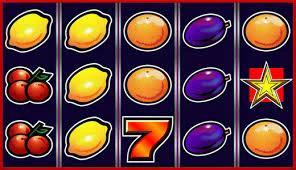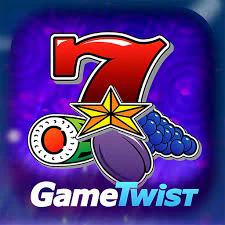# The Game of Twister: An Overview
Twister is a classic party game that has entertained players for generations. Known for its colorful mat and physical challenges, Twister combines mobility, strategy, and a touch of luck. Whether you’re at a birthday party, a family gathering, or just hanging out with friends, Twister is guaranteed to create laughter and memorable moments. This article delves into the gameplay, strategies, history, and the social dynamics involved in playing Twister.
# The Setup: Creating the Perfect Twister Environment
Setting up the Twister game is both simple and crucial for an enjoyable experience. Players need an open space that allows for ample movement. The Twister mat consists of a large plastic sheet featuring rows of colored circles—typically red, blue, yellow, and green. It’s essential to lay the mat on a flat surface to prevent slips and ensure that players can easily place their hands and feet on the colors.
To begin, players should also designate a referee, often referred to as the “caller.” The caller has a spinner that indicates which color and body part players will use to make their moves. This role is vital for maintaining the flow of the game, as well as for transparency. Before the game starts, players should have a quick discussion to establish any house rules—these could include the number of players, whether to allow elimination or to play until a clear winner emerges.
# Understanding the Basic Rules of Twister
The rules of Twister are straightforward, yet they provide a solid foundation for gameplay. Players start by standing at opposite ends of the mat. The caller spins the spinner to determine which color and body part players must use for their next move. For example, a spin might indicate “left hand, blue.” Players must then maneuver their bodies to place their left hand on a blue circle, trying to avoid falling over or knocking others down.
If a player falls or is unable to make a legal move, they are typically “out” for that round. The last player remaining upright wins the game. However, the simple nature of the rules allows for variations depending on the group’s preferences. Some players might want to introduce challenges, such as adding silly tasks for the caller to incorporate—aspects that can inject additional humor into the competition.
# The Social Dynamics of Playing Twister
Twister is more than just a physical game; it’s an engaging social activity that encourages interaction among players. It breaks down barriers and fosters a light-hearted atmosphere where laughter and joviality reign supreme. In its playful nature, Twister is a fantastic icebreaker, making it an ideal game for new acquaintances or larger social gatherings.
One of the most significant aspects of Twister’s social dynamics is the physical closeness it creates. Players must often twist and turn their bodies in ways that can feel awkward yet hilarious, especially as they navigate limited space and the positioning of others. This unique environment can prompt camaraderie and shared experiences, resulting in stronger bonds among players. The shared laughter reminiscent of childhood can provide a sense of nostalgia and joy.
# Tips and Strategies for Success in Twister
While Twister may seem like a game of chance, players can employ several strategies to enhance their performance. One key aspect is maintaining balance. Players should distribute their weight evenly and position themselves to minimize the risk of falling. Flexibility is also an asset; players will find themselves in a variety of challenging positions and should be able to adapt quickly.
Another critical strategy is to observe opponents’ movements. Players should not only focus on their own strategy but also on the positioning of others. Anticipating how opponents will react can provide an edge, ensuring that you can maintain your balance while forcing others to make difficult moves. Movement is paramount; players should use their upper bodies to create balance, and keeping knees slightly bent can help lower the center of gravity, making falls less likely.

# The Evolution of Twister: History and Cultural Impact
The history of Twister is as colorful as the game itself. It was created in the 1960s by Charles Foley and Neil Rabens and was first introduced to the market as “Twist” by Milton Bradley in 1966. Initially received with skepticism, it quickly gained popularity, especially after being featured on “The Tonight Show” with Johnny Carson, where it was dubbed “Sex in a Box” due to its inherently intimate and physical nature.
Twister has significantly influenced pop culture, being referenced in various movies, television shows, and even music. Its incorporation into educational settings also shows that the game can promote physical activity and coordination among children. Over the years, Twister’s appeal has transcended age barriers, making it a beloved staple in both childhood play and adult gatherings.
# Variations and Thematic Twister Games

To keep the game fresh and engaging, players often introduce various thematic twists to Twister. From holiday-themed Twister mats adorned with seasonal colors to incorporating challenges based on popular movies or shows, these variations can add a unique flavor to the traditional gameplay.
Some players have crafted their own versions, using customized mats that correspond to specific games or activities, such as “drunken Twister” using silly tasks or rules that play up the absurdity. Others have tried combining Twister with trivia questions, requiring players to answer correctly before making their next move. These variations enrich the gameplay and can help to accommodate different age groups while ensuring that the game remains entertaining.
# The Role of Twister in Modern Entertainment
In the age of digital entertainment, Twister remains relevant as people seek offline, engaging activities. The simplicity of Twister allows it to transcend technological trends, serving as a reminder that social interaction and in-person activities play a crucial role in human connection.
As people navigate through busy schedules and digital distractions, games like Twister offer an escape—a combination of fun physical activity and the joy of social bonding. Nowadays, various TV shows and game nights often incorporate Twister, showcasing its enduring popularity and capacity to bring laughter to any gathering.
# Conclusion: Twister as an Icon of Fun
In conclusion, Twister has established itself as an iconic game that effectively combines elements of fun, skill, and social bonding. The simple yet engaging design has allowed Twister to stay relevant across generations, captivating players and generating countless moments of joy. Its historical significance, cultural impact, and potential for variation demonstrate that Twister is more than just a game; it is a celebration of connection, movement, and laughter. Whether you’re vying for victory or simply looking to enjoy a laugh, Twister promises an experience that remains unparalleled in the realm of social games. So gather your friends, roll that spinner, and dive into the delightful world of Twister!
